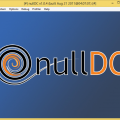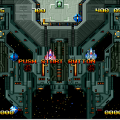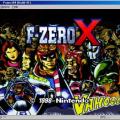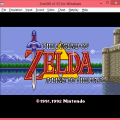- Fixes key repeat when returning from viewing artwork/picture
- An Emulator list will recache if the database is updated
- When in Video lists, will now also show box art with V3 themes
- 0 replies
- 1,742 views
- Add Reply
- 0 replies
- 4,772 views
- Add Reply
- 5 replies
- 4,956 views
- Add Reply
GameEx v9.37 Released!

"GameEx is a graphical DirectX based front-end for MAME, Zinc, Daphne, PC Games, and all command line based game emulators, along with being a good Home Theater PC solution. "
PSP System Software 4.00 Released

Sony has released a new major version of the official System Software for the PlayStation Portable. The impressive list of changes includes;
* [internet Search] has been added as a feature under [Network].
* You can now change viewing speed during video playback by pressing the UP/DOWN buttons. Use this feature if you want to watch a video quickly, or if you want to slow down playback and listen to the dialogue carefully.
I'm with you on the 'who cares' part. Not many new features for a big 4.00 update, but the XMB Google Search could be useful. Let's all wait for a 4.00 M33 before upgrading though. That's my advice to the kiddies at least.
WinUAE 1.5.0 Public Beta 25 RC1
MAME 0.125u6 related releases

- ######## LATEST EMULATION NEWS WILL APPEAR BELOW THIS NEWS THREAD ######## -
[This thread is constantly updated throughout the week with the latest related releases for the newest version of MAME!]
EMULATORS
=========
MameUI64 .125.6, 64bit version for 64bit Windows OSes [XP64, Vista64]
MameUI32 .125.6, 32bit version for 32bit Windows OSes [Win98/ME/2000/XP/Vista]
SDLMAME 0.125u6 (For Mac OS X)
Mame Plus! [Ash Build] 0.125u6
MAME Plus! XT 0.125u6 (All In One)
AgeMAME 0.125u6 -- SKIPPED! (Read quote below)
DATS
====
Mame Plus! [Ash Build] 0.125u6a DAT File
EXTRA
=====
Catlist 0.125u6 (cat32, deluxe32, catver.ini, genrev)
MAME32 0.125u6 Category-, Version and Alltime inifiles
MAMEScore Files 0.125u6: story.dat, mamescore.ini, default.el
MAME32 Plus! 0.125u6 Japanese Game List / Language Pack
NOTES (quotes of Change logs)
=====
Updated to MAME 0.125u6 - MAMEUI 0.125u6
- Fixed wrong background in Jan Jan Paradise 2. (Official MAME issue)
Updated to MAME 0.125u6 - MAMEUI 0.125u6
- Added a workaround to fix MAME Testers bug ID 1905. (Input ports errors)
- Updated the GUI to latest official MAMEUI release.
0.125u6: Updated to MAME 0.125u6. Added 0.125u6 Source/Listinfo changes. Newest Bugs (18th Jun). Added missing 'MAMETesters Fixed Bugs' from 0.125-0.125u6. Fixed Mameinfo.dat infos.
125u6 is being skippedJune 17th, 2008 by James
There's no specific need to patch anything, so I'm not doing.
MAMETesters Bugs Fixed----------------------
- 00181: [sound] ddragon3: OKI volume is too low in MAME. (sonikos)
- 00417: [sound] ddragon3: the title voice should start when the
background tune hits its highest note. (sonikos)
- 01441: [sound] ctribe, ddragon3: The OKI6295 playback frequency is
too high. (sonikos)
- 01888: [DIP/Input] raidena, raidenk, raident: Flip screen DIP switch
doesn't work. (couriersud)
-=-| Mame32Plus [Ash-Build] ver 0.125u6 |-=-----------------------------------------------------
- This list was updated on 18-06-2008.
- Added Super Gem Fighter Mini Mix (USA 970904), Phoenix Edition.
updated MSVC build script [JoshuaChang]updated Japanese list (jplist0125u6_0618.zip) [mamelist jp]
日本語list (jplist0125u6_0618.zip)を更新しました [mamelist jp]
更新了日文list (jplist0125u6_0618.zip) [*last-change*mamelist jp]
added WIP driver for "Driver's Eyes" on namcos21 [Conda]
添�� namcos21基版"Driver's Eyes"WIP驱动 [Conda]
catlist v0.125u6 [s_bastian]
updated Makelang_text, need Translation (Multi-Language) help [download text, submit translation]
updated GUI and fixed some minor bugs, need delete old ini\mameui.ini [sword]
updated Simplified Chinese list (0125u6_0518) [kof2112]
- ######## LATEST EMULATION NEWS WILL APPEAR BELOW THIS NEWS THREAD ######## -









